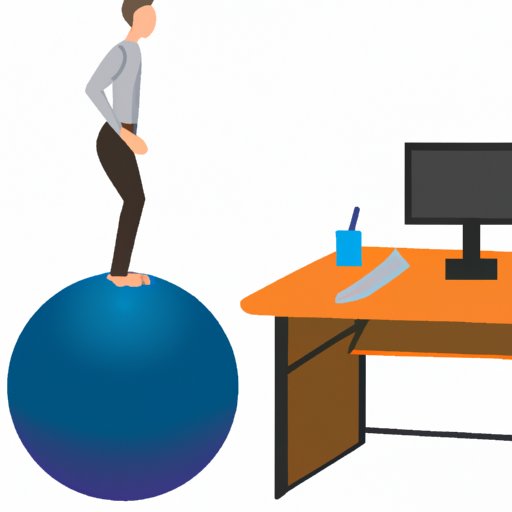Introduction
A standing desk is a type of desk designed to be used while standing up. This style of desk has become increasingly popular in recent years due to its purported health benefits. However, there are also potential drawbacks to using a standing desk. In this article, we will explore the pros and cons of standing desks, as well as provide advice on how to optimally use them and investigate possible alternative solutions.

Pros and Cons of Standing Desks
The potential health benefits of using a standing desk are often cited as a major reason for their popularity. These include improved posture, less strain on the neck, shoulders, and back, and reduced risk of chronic diseases such as diabetes, heart disease, and obesity. Additionally, studies have found that standing desks can improve productivity, focus, and energy levels.
However, there are also potential drawbacks to using a standing desk. For example, standing for long periods of time can lead to fatigue, sore feet, and other aches and pains. Additionally, if the desk is not set up correctly, it can cause strain on the body and potentially lead to injury. Therefore, it is important to understand how to optimally use a standing desk.

Researching How to Optimally Use a Standing Desk
When setting up a standing desk, it is important to make sure that the desk is at the correct height. Generally, the desk should be at a height where your elbows are at a 90-degree angle when typing. Additionally, the monitor should be at eye level, and you should use an anti-fatigue mat if necessary.
It is also important to adjust the height of the desk throughout the day. Studies have found that alternating between sitting and standing can reduce strain on the body and reduce fatigue. Additionally, it is recommended to incorporate movement into your workday. This can be done by taking short breaks to walk around or do some light stretching.
Exploring Ergonomic Solutions for Standing Desks
In order to maximize the potential health benefits of using a standing desk, it is important to choose an ergonomically designed desk. An ergonomic desk is designed to support the body and reduce strain on the neck, shoulders, and back. Additionally, it is recommended to add accessories such as an adjustable keyboard tray, footrests, and monitor arms in order to further optimize the desk set up.

Investigating Alternatives to Standing Desks
If standing desks are not for you, there are other options available. Sitting desks are a great alternative for those who prefer to sit down while working. Additionally, exercise balls can be used as chairs and can help improve posture and reduce strain on the body.
Conclusion
In conclusion, standing desks can offer many potential health benefits. However, it is important to understand the potential drawbacks of using a standing desk and to ensure that it is set up correctly. Additionally, there are ergonomic solutions and alternatives available for those who prefer not to use a standing desk. Ultimately, it is important to find the right solution for you in order to maximize comfort and productivity.


